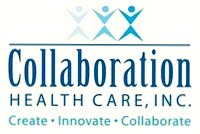
We wrote about Randy Pausch in our July, 2008 Newsletter. He was the Carnegie Mellon professor who created a huge following with his talk to students at the university that resulted in his book “The Last Lecture.” Randy Pausch’s message to others was to always, fearlessly, pursue your dreams. He gave this lecture knowing his cancer was terminal and he died in 2007 not long after his book was published. Despite the physical challenges, the other aspects of his life remained strong. He maintained a positive perspective of life to the end.
These two individuals are examples of the idea that “health” is a much broader term than traditionally used in health care today. While we’re used to the diagnosis, prognosis, prescriptions, interventions, and measurement of the physical aspects of health we really don’t dive into all of the other areas of life that have an impact our overall health and well being as a standard part of the health care delivery process. The emotional health, spiritual health, intellectual health, and social health of a person can dramatically influence the way a person maintains when the physical health breaks down. They may also have some influence in determining what ultimately results to the physical health as well. We need to start paying more attention to these aspects in our definition of health as we change the paradigm in health care delivery from sickness to health.
The CDC’s latest report on the U.S. National Health and Nutrition Survey indicates almost half of US adults now have risk factors contributing to heart disease. We all know the obesity statistics. A study to be released in the Archives of Internal Medicine found that the lifestyle habits of a study population in Britain cut longevity by 12 years. We all know the simple lifestyle decisions made each day are contributing to the enormous costs of the care needed today and the care that will be needed tomorrow.
Reed Tuckson, M.D. of the UnitedHealth Foundation put it this way, “Unless there is urgent action across our society, our already burdened care system will be swamped by a tsunami of cost and demands from preventable chronic disease.” Our system simply can’t afford the lifestyles our society has embraced.
While Eva Makvoort’s and Randy Pausch’s physical health failed, the other aspects of their lives remained strong giving them the best quality of life they could achieve given the circumstances. Their physical options were limited.
But, most have a choice and have the opportunity to make the decisions we all know are necessary to improve both health and quality of life. We just need to make the commitment and do it and provide the support and resources along the way to help make it happen. While the physical health may remain the “standard marker” for defining a healthy person we’ll need to consider the emotional, social, spiritual, and intellectual aspects of health as well. They are all related.
One of Eva’s followers wrote, “I felt so selfish when I stumbled across your [LiveJournal] on here, because I’ve been smoking cigarettes for yours, taking my lungs for granted. You’ve helped me quit the worst habit I’ve ever had.”
Sometimes it just may take appreciating what you have to get started.








